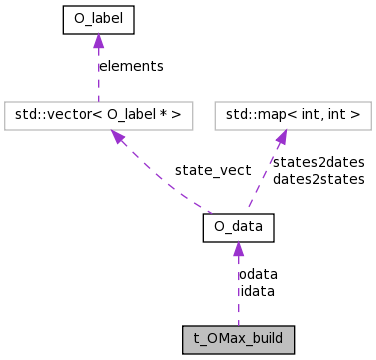
OMax.build external. More...

Public Attributes | |
| t_object | ob |
| Pointer to the object itself. | |
| t_symbol * | oname |
| Pointer to source FO name. | |
| t_symbol * | odataname |
| Pointer to source Data Sequence name. | |
| O_data * | odata |
| Pointer to source Data Sequence structure. | |
| bool | odatabound |
| Source binding flag. | |
| t_symbol * | idataname |
| Pointer to new Data Sequence name. | |
| O_data * | idata |
| Pointer to new Data Sequence structure. | |
| bool | idatabound |
| New binding flag. | |
| O_DataType | datatype |
| Type of data. | |
| long | date |
| Current date. | |
| t_atom * | addout |
| Array for the output. | |
| void * | out_state |
| Outlet 0 (leftmost): state numbers. | |
| void * | out_added |
| Outlet 1: Sequence size. | |
| void * | out_date |
| Outlet 2: Ending date. | |
Standard Max5 methodes | |
|
| |
| void * | OMax_build_new (t_symbol *s, long argc, t_atom *argv) |
| Object instantiation. | |
| void | OMax_build_free (t_OMax_build *x) |
| Object destruction. | |
| void | OMax_build_assist (t_OMax_build *x, void *b, long io, long index, char *s) |
| Inlet/Outlet contextual information when patching in Max5. | |
Internal routines | |
|
| |
| t_symbol * | OMax_build_dataname (t_symbol *name) |
| Return Data Sequence name from FO name. | |
| bool | OMax_build_bind (t_OMax_build *x) |
| Bind the builder with both Data Sequences. | |
Input/Output routines | |
|
| |
| void | OMax_build_bang (t_OMax_build *x) |
| Output current ending date & size. | |
| void | OMax_build_add (t_OMax_build *x, long statein) |
| Add a state from the source Data Sequence to the new Data Sequence. | |
OMax.build external.
This external object handles the construction of a Data Sequence based on the states of another Data Sequence (OMax.data objects) in Max5
Definition at line 30 of file OMax.build.c.
| void OMax_build_add | ( | t_OMax_build * | x, | |
| long | statein | |||
| ) |
Add a state from the source Data Sequence to the new Data Sequence.
add followed by a state number (int) Use the current date to reference the state in the new Data Sequence
Use duration to compute the new ending date
Output the new ending date
Output the current size
Output the pair: stated number in the source Data Sequence & state number in the new Data Sequence
Definition at line 271 of file OMax.build.c.

| void OMax_build_bang | ( | t_OMax_build * | x | ) |
Output current ending date & size.
bang Definition at line 250 of file OMax.build.c.

| bool OMax_build_bind | ( | t_OMax_build * | x | ) |
Bind the builder with both Data Sequences.
Check if first name points to an existing OMax.data object. If so, binds t_OMax_build::odata with the Data Sequence structure (t_OMax_data::data member).
Check if second name points to an existing OMax.data object. If so, binds t_OMax_build::idata with the Data Sequence structure (t_OMax_data::data member).
Definition at line 203 of file OMax.build.c.
| t_symbol * OMax_build_dataname | ( | t_symbol * | name | ) |
Return Data Sequence name from FO name.
Append _data to the FO name
Definition at line 192 of file OMax.build.c.
| void * OMax_build_new | ( | t_symbol * | s, | |
| long | argc, | |||
| t_atom * | argv | |||
| ) |
Object instantiation.
Check first & second arguments of the Max5 object for a FO name and another Data Sequence name
Definition at line 102 of file OMax.build.c.

 1.6.1
1.6.1